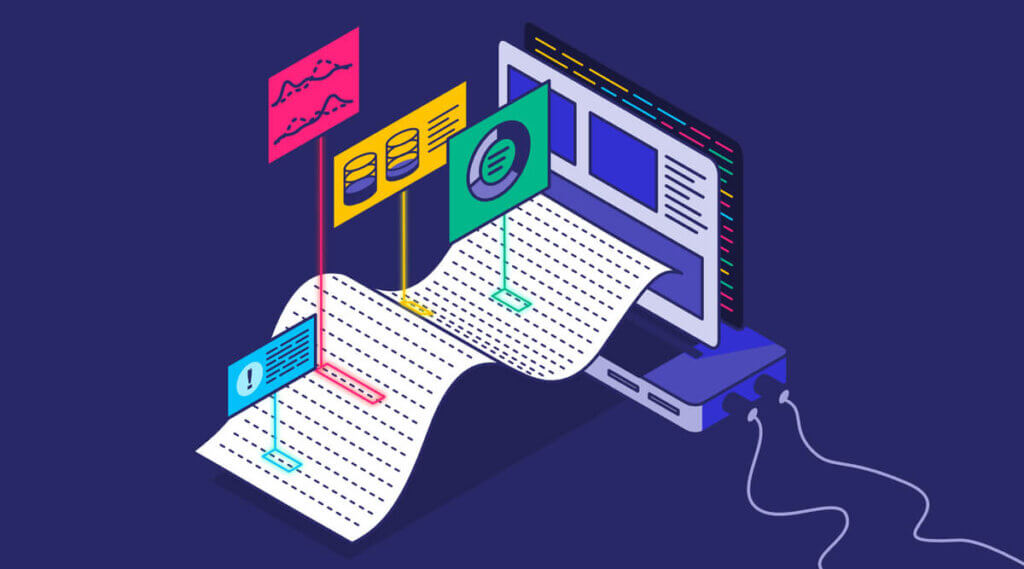🔍 How Security Log Analysis Helps Prevent Data Breaches and Insider Threats
In today’s digital threat landscape, log analysis is one of the most powerful tools cybersecurity teams have at their disposal. By systematically collecting and analyzing logs from systems, applications, and network devices, security analysts can detect anomalies, identify breaches early, and prevent cyberattacks before they escalate.
Here’s how log analysis works in action — and how it can mean the difference between a secure network and a costly breach.

✅ What Is Log Analysis?
Log analysis involves collecting and examining log data — digital records of activity on a system or network. These logs come from:
- Web servers (e.g., Apache, Nginx)
- Firewalls and IDS/IPS
- Operating systems (Windows Event Logs, Linux syslog)
- Applications and databases
- Cloud environments (AWS CloudTrail, Azure Monitor)
💡 Real-World Case Scenarios
📘 Scenario 1: Brute Force Attack Detection
Context: A medium-sized law firm uses Microsoft 365 and Active Directory. Log analysis tools monitor login attempts across all user accounts.
Log Pattern Detected:
- A spike in failed login attempts across several user accounts.
- Attempts originating from foreign IPs not tied to legitimate travel.
Action Taken:
The security team set a rule to trigger alerts on 10+ failed login attempts within 5 minutes from the same IP. They blocked the IP at the firewall and forced password resets.
Result: Prevented potential unauthorized access to sensitive legal documents.
📘 Scenario 2: Insider Threat Caught Early
Context: An employee at a SaaS company starts downloading large volumes of customer data shortly before resigning.
Log Pattern Detected:
- Access logs show unusually large data exports from the CRM system during non-working hours.
- Authentication logs confirm it was done using valid credentials.
Action Taken:
The anomaly was flagged by a UEBA (User and Entity Behavior Analytics) engine. HR and Legal were notified. The employee’s access was revoked, and legal action was prepared.
Result: Protected customer data from being leaked or stolen.
📘 Scenario 3: Malware Beaconing Detected
Context: A healthcare organization is targeted by malware that establishes outbound connections to a command-and-control server.
Log Pattern Detected:
- Firewall logs show periodic outbound traffic to a suspicious domain not typically accessed by employees.
- DNS logs confirm repeated lookups of the same domain every hour.
Action Taken:
The domain was blacklisted, and the infected endpoint was isolated. Analysts found malware communicating with the domain and removed it.
Result: Stopped exfiltration of patient data and preserved compliance with HIPAA.
🚨 What to Monitor in Logs
- Authentication anomalies: Failed logins, logins from new locations or devices.
- Privilege escalations: Sudden changes to admin rights.
- Network traffic: Unusual outbound connections, large data transfers.
- File access: Uncommon file reads/writes or downloads.
- Configuration changes: Especially those made outside business hours.
🧠 Final Thoughts
Cyberattacks don’t happen in a vacuum — attackers leave traces. Proactive log analysis helps security teams catch these traces early, enabling them to prevent damage rather than react to it. It’s not enough to just store logs; you must actively analyze them, set up real-time alerts, and apply threat intelligence.
🔐 Log analysis doesn’t just help you detect attacks — it helps you understand your environment, your risks, and how to respond effectively.
Whether you’re a startup or a Fortune 500 enterprise, incorporating log analysis into your cybersecurity strategy is non-negotiable.




